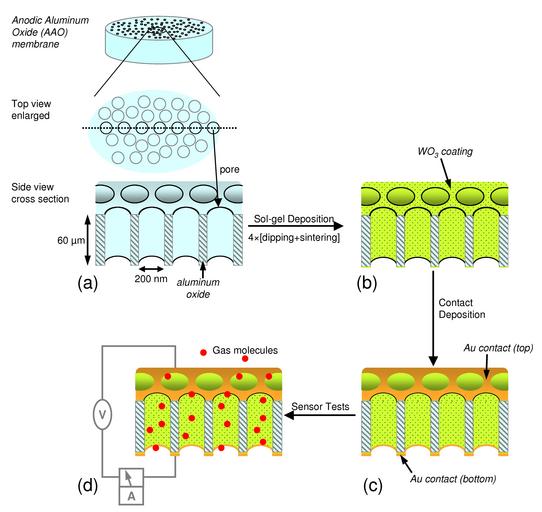MAKE A MEME
View Large Image

| View Original: | Metal-oxide nanotubes schematic (5941042730).jpg (2400x2266) | |||
| Download: | Original | Medium | Small | Thumb |
| Courtesy of: | commons.wikimedia.org | More Like This | ||
| Keywords: Metal-oxide nanotubes schematic (5941042730).jpg A schematic diagram not to scale of the preparation and application of a nanotube gas sensor based on tungsten oxide deposited on a substrate of nanoporous aluminum oxide Perforated with millions of nanoscale holes the aluminum oxide sheet served as a template or mold for the creation of the nanotubes Researchers dipped the sheet in a solution of tungsten ions allowed the sheet to dry and sintered a baking process characterized by incremental temperature increases used to ensure that a coating will stick it four times building up a thin film of tungsten oxide on the walls of the pores Nanotubes are an excellent structure for gas sensing applications because of their high surface-to-volume ratio The NIST team estimates that devices based on their technique will be 100 to 1 000 times more sensitive than comparable film-based sensors and may be suitable for studying biological cell stress and cell communication Credit NIST Disclaimer Any mention of commercial products within NIST web pages is for information only; it does not imply recommendation or endorsement by NIST Use of NIST Information These World Wide Web pages are provided as a public service by the National Institute of Standards and Technology NIST With the exception of material marked as copyrighted information presented on these pages is considered public information and may be distributed or copied Use of appropriate byline/photo/image credits is requested https //www flickr com/photos/usnistgov/5941042730/ Metal-oxide nanotubes schematic 2009-01-13 11 23 https //www flickr com/people/63059536 N06 National Institute of Standards and Technology PD-USGov National Institute of Standards and Technology https //flickr com/photos/63059536 N06/5941042730 2016-09-07 02 31 21 United States Government Work Uncategorized 2016 December 20 | ||||